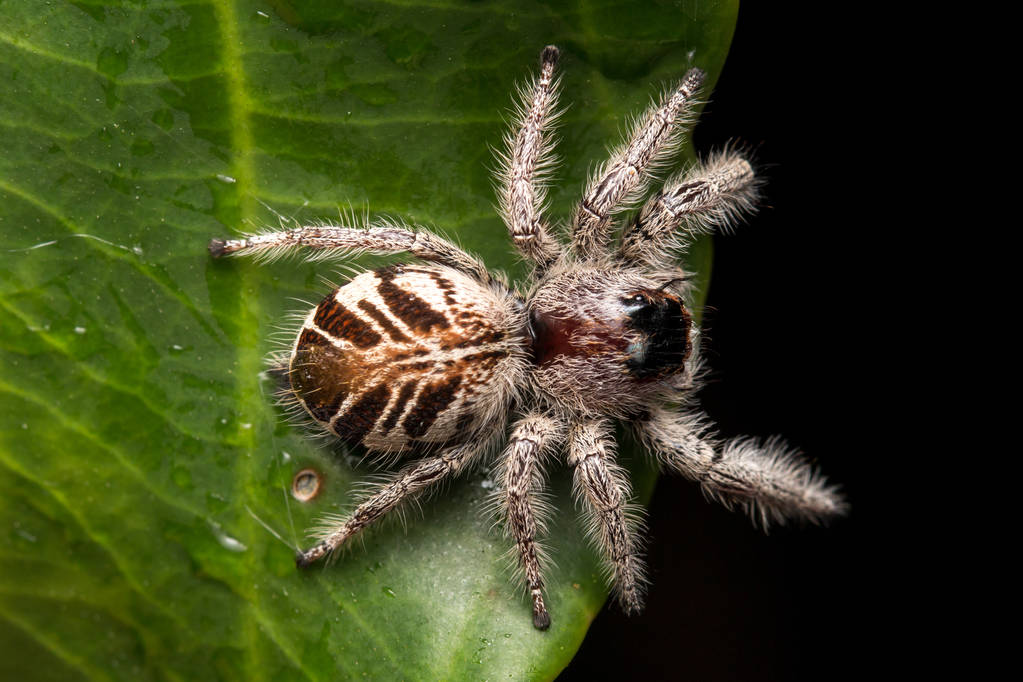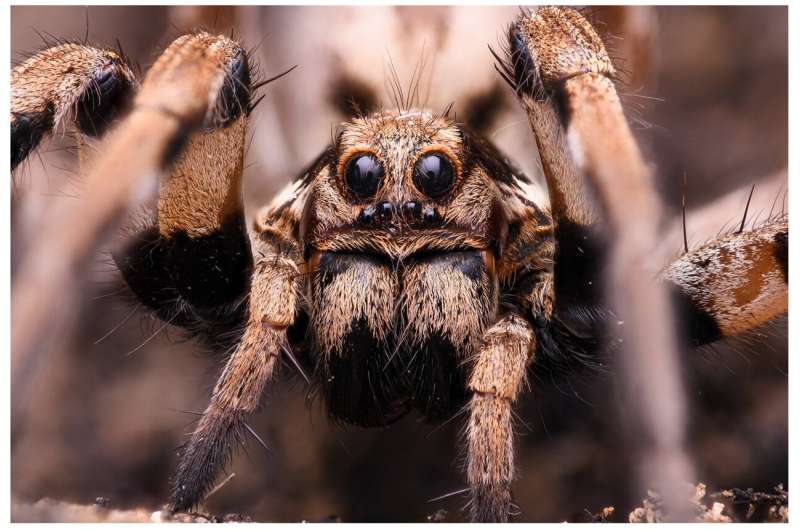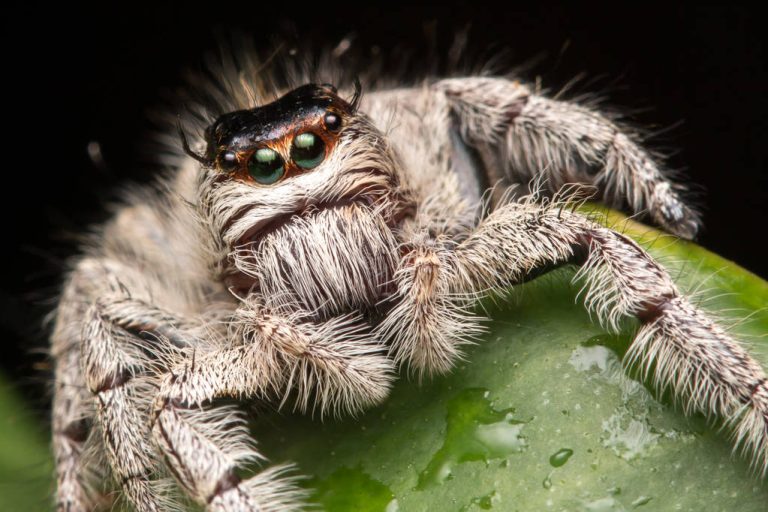Enzymes in Spider Venom Hold Bioeconomic Potential
Enzymes found in spider venom hold significant bioeconomic potential for various industries, including waste management and detergents. Despite being overshadowed by neurotoxins, these enzymes have the capacity to catalyze chemical reactions sustainably, presenting a promising new avenue for bioeconomy research. With only 1% of spider species studied so far, the untapped potential in the remaining 99% offers exciting opportunities for scientific discovery and industrial applications.
Summary
- Spiders use venom to capture prey or for defense.
- The venom is known for containing neurotoxins that affect the nervous system of their prey.
- Recent research has revealed the presence of a wide variety of enzymes in spider venom.
- Scientists discovered over 140 different enzyme families in the venom of various spiders.
- These enzymes have potential for use in bioeconomic applications like waste management and detergents.
- Enzymes are characterized by low by-product formation, low energy consumption, and biodegradability.
- Spiders are highly diverse with over 52,000 species worldwide.
- The venom of a single spider species can contain more than 3,000 molecules.
- The new discovery suggests that the chemical diversity of spider venom has been underestimated.
- Industry is always seeking new enzyme sources for sustainable production processes.
- Spider venom could be a new source of enzymes for biotechnology and other sectors.
- Researchers have studied less than 1% of the world’s spider species for their venom.
- Future studies are likely to reveal even more exciting discoveries from the remaining 99% of spider species.
- Spider venom has the potential to transform various industries, from agriculture to waste management.
- This discovery could lead to new research approaches and applied technologies.

Introduction
Spiders, known for their venomous bites, are among the most feared creatures due to their ability to immobilize prey using chemical compounds. Spider venom contains an array of small neurotoxins that target the nervous systems of their victims. These neurotoxins have been the focus of intense scientific investigation. However, recent studies have uncovered a hidden treasure within this deadly cocktail—enzymes. These enzymes have been largely overlooked, but now, scientists have revealed their potential for a variety of bioeconomic applications.
A team of researchers from the LOEWE Center for Translational Biodiversity Genomics (TBG) in Hesse, Germany, made a groundbreaking discovery. While most attention has traditionally been focused on the neurotoxins within spider venom, these scientists turned their attention to the enzymes embedded within the venom. Their findings were published in the journal npj Biodiversity, and they revealed an astonishing diversity of enzymes that facilitate critical biochemical reactions. This discovery could open new doors for industries that rely on sustainable processes, like biotechnology, waste management, and the production of detergents.
Table 1: Overview of Key Findings from the Study
| Aspect | Findings |
|---|---|
| Number of Enzyme Families | More than 140 enzyme families identified in spider venom. |
| Venom Composition | Venom contains over 3,000 molecules, primarily neurotoxins and enzymes. |
| Applications | Potential for use in waste management, detergents, and bioeconomic industries. |
| Research Status | Less than 1% of spider species studied for venom composition. |
With over 52,000 species of spiders around the world, these arachnids boast one of the most complex venom systems in the animal kingdom. The venom of a single spider species can contain more than 3,000 molecules, primarily made up of small neurotoxins. These toxins serve to overpower the spider’s prey, typically insects. However, a new focus on the enzymes within spider venom has revealed a greater level of biochemical complexity than previously thought.
“In the past, a few pioneering studies suggested the presence of enzymes in spider venoms, but a targeted search for them has never been carried out,” explained Dr. Tim Lüddecke, head of the Animal Venomics working group at the IME-BR in Giessen, Germany. “We took on this task and systematically screened the raw data of all so far venom-wise analyzed spiders for enzymes.”
Dr. Lüddecke’s team found that there are more than 140 different enzyme families in spider venom, highlighting a previously underexplored aspect of venom research. This discovery dramatically increases the chemical diversity associated with spider venoms, opening up new avenues for research and potential applications.
Enzymes play a critical role in accelerating biochemical reactions while minimizing by-product formation, energy consumption, and waste. This makes them ideal candidates for sustainable industrial processes. Josephine Dresler, a Ph.D. student and first author of the study, emphasized the bioeconomic potential of these enzymes, stating:
“Enzymes are key building blocks of the bioeconomy. They accelerate chemical reactions and are characterized by very low by-product formation, low energy consumption, and biodegradability.”
Given these properties, enzymes identified in spider venom could revolutionize industries like waste management and the production of detergents. For instance, enzymes with fat-splitting or protein-degrading capabilities could significantly improve the efficiency and sustainability of waste management processes.

Table 2: Potential Industrial Applications of Spider Venom Enzymes
| Industry | Application of Enzymes |
|---|---|
| Waste Management | Fat-splitting enzymes could improve the decomposition of waste. |
| Detergent Production | Enzymes could enhance the cleaning power of eco-friendly detergents. |
| Biotechnology | Enzymes may serve as catalysts in drug production and biochemical processes. |
A New Frontier in Applied Venom Research
Until now, spider venom research has primarily focused on medical and agricultural applications. Venom has been studied for its potential to develop new painkillers, pesticides, and antivenoms. However, the discovery of diverse enzymes in spider venom opens up a completely new field of applied research. These enzymes have the potential to be harnessed for sustainable technologies, offering novel solutions for industries beyond medicine and agriculture.
“Our discovery opens up the possibility of establishing a completely new field of applied research,” stated Dr. Lüddecke. This new focus on spider venom enzymes could lead to breakthroughs in biotechnology, environmental conservation, and even renewable energy. With only 1% of spider species studied so far for their venom composition, scientists believe that there are countless more discoveries yet to be made.
As the research community continues to investigate the untapped potential of spider venom enzymes, there is a growing consensus that this field could revolutionize various industries. Whether through eco-friendly detergents or sustainable waste management systems, the enzymes found in spider venom could become essential tools in the global shift toward sustainable production.
But the road ahead is long, as the majority of spider species have yet to be studied. “I am confident that we will make more exciting discoveries in the remaining 99% of the world’s spider fauna,” said Dr. Lüddecke. Future studies will likely reveal even more enzyme families, further expanding the potential uses for these powerful biochemical tools.
References
- Dresler, Josephine et al. “Enlightening the toxinological dark matter of spider venom enzymes.” npj Biodiversity (2024). DOI: 10.1038/s44185-024-00058-2
- Lüddecke, Tim. LOEWE Center for Translational Biodiversity Genomics, Germany. Research on spider venom enzymes.
- TBG Institute. “Spider Venom Complexity.”

